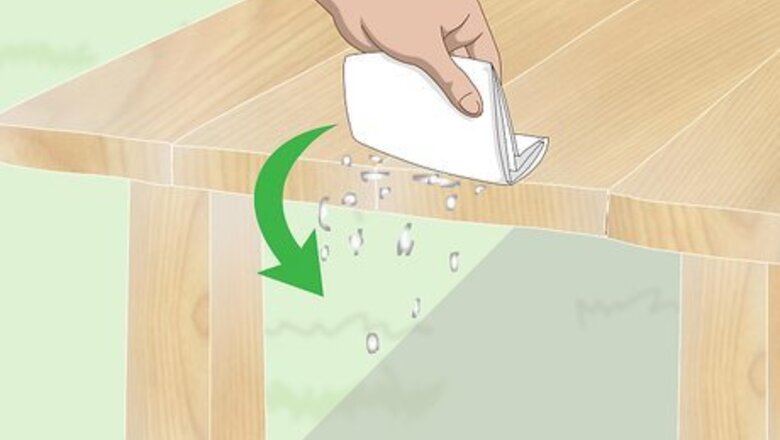
views
Sanding the Teak
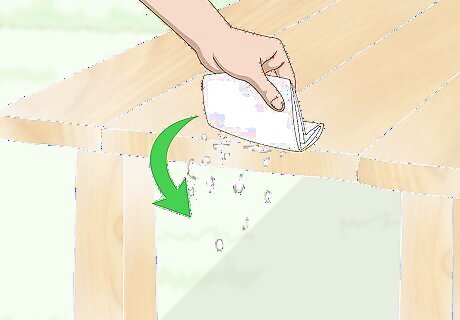
Wipe dirt, dust and debris off. You can use a dry paper towel or a cloth to brush any dirt off. If there are more tenacious spots to clean off, you can use a wet rag to rub them clean. If there's any grease, dirt, or dust on the surface of the wood, the stain won't adhere properly. Don’t use any cleaning products. You might damage the wood, but you’ll definitely make the staining process more difficult.
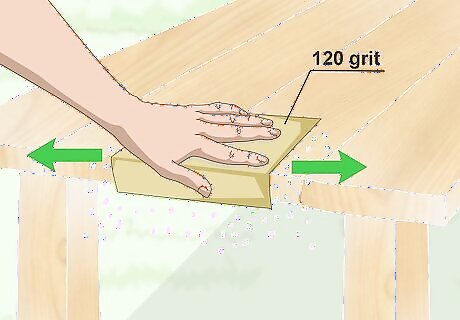
Sand rough spots with 120 grit sandpaper. Run your hand over the furniture to find any rough spots in the wood. If they need to be sanded down to match the rest of the surface, use this sandpaper to do so. While sanding, check often to make sure the spot is even with the rest of the wood.
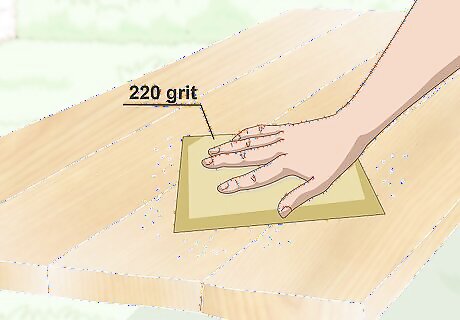
Use 220 grit sandpaper on the whole surface. Before staining, you’ll want to make sure the surface is even and prepared to absorb wood stain. Sand the entirety of the surface until it becomes even and smooth to the touch. This will help open the pores of the wood, which will allow the stain to adhere better to the surface of the wood. Sand along the grain or you risk scratching the wood. Wipe any wood dust off with a dry rag before proceeding.
Smoothing the Surface
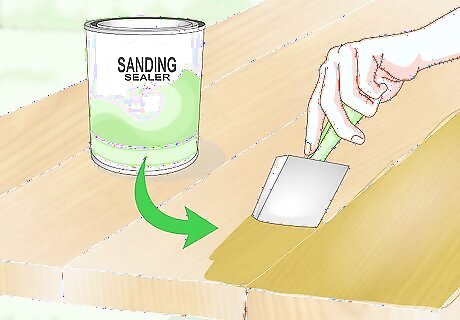
Paint on a layer of sanding sealer. Use a foam brush to cover the wood in sealer. This will make the surface smoother and will give the wood stain better grip. If you want a lighter color, you can dilute the sealer with mineral spirits.
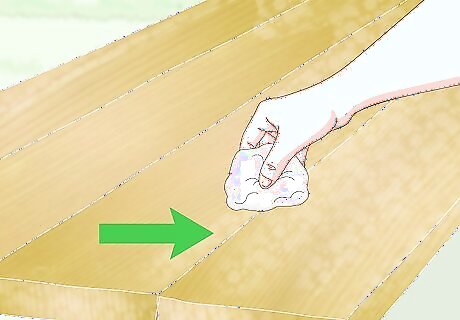
Wipe off excess sealer after a few minutes. Once the sealer has started to dry, use a clean cloth to wipe off any sealer that’s still pooled atop the wood. This will prevent blotches and spots from forming on the wood. It’ll also keep the surface smooth.
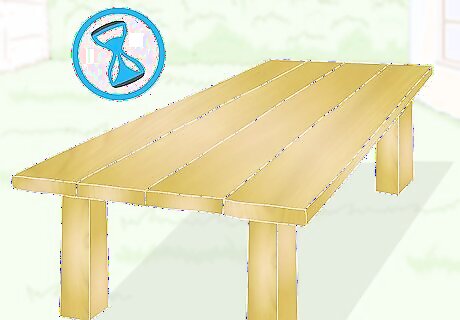
Let the sealer dry completely. It should only take a few hours for the sealer to dry completely.
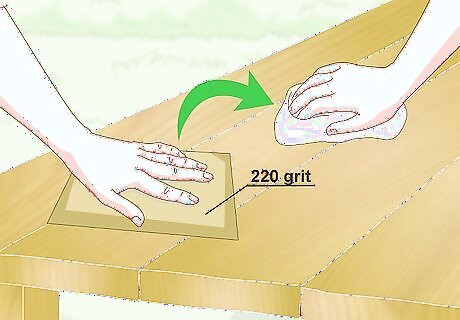
Pass over your wooden furniture with 220 grit sandpaper. You should sand the surface a few times before proceeding. This will smooth out any spots where the sealer might not have dried evenly. Use a rag to wipe off any residue after sanding.
Staining the Teak
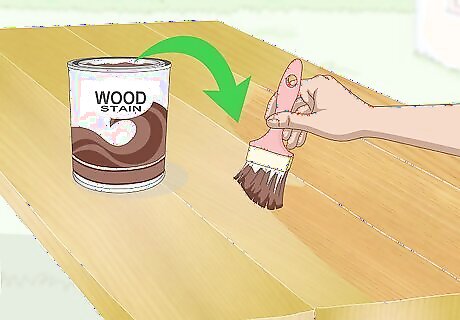
Paint on a layer of stain. You can use a variety of tools to do this. A foam or bristle brush will do fine, but you can also use a cloth dipped in stain to color your teak furniture. Apply an even coat all over. If there are any parts of the furniture you don’t want to stain, use masking tape to protect them. Wood stain comes in both oil-based and water-based formulas. Water-based formulas are more common, but oil-based may last longer.
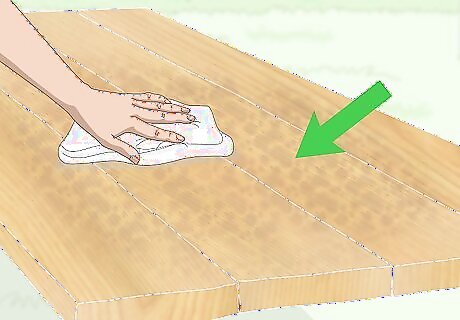
Wipe off any stain not absorbed by the wood. Use a clean dry rag to wipe off excess stain. Use a rag you don’t mind dirtying; the wood stain would be incredibly difficult to wash out. The longer you leave on the stain before wiping, the darker the color.
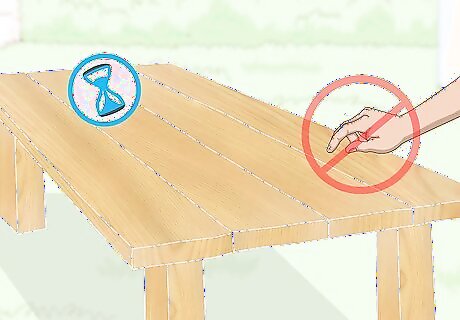
Let the wood stain dry. The amount of time it takes for the stain to completely dry will depend on how thick of a layer you used. Avoid touching the stain too much if it’s still wet; you might end up with an uneven, blotchy coat.
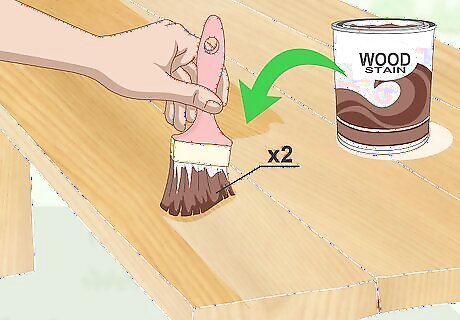
Add another layer of stain for a darker color. After the first coat has dried, take a moment to see if you’re satisfied with the color. If you want your furniture to be darker, you can add another coat of wood stain, right on top of the previous layer, following the same process.
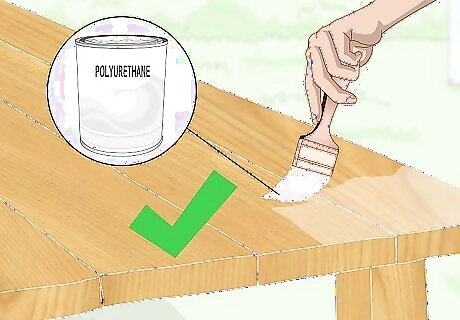
Apply a finish to the surface. Use a clean brush to paint on the finish once you’ve gotten the desired color. After applying the finish, make sure to give it plenty of time to dry. There are three main types of finish, each with their own characteristics: Oil finishes look closest to wood, but aren’t the best for protecting wood. Avoid using this kind of finish on outdoor furniture. Lacquer strike a good balance between attractive finish and durability, but require multiple coats. Polyurethane finishes are the most protective of the three, even repelling water.




















Comments
0 comment